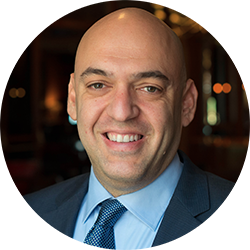This is not your parents’ marijuana or the marijuana you might have encountered when you were a teenager.
In the last several years, a new designer drug has become available, much of it used by juveniles—synthetic marijuana.
Unlike old-fashioned, naturally grown marijuana, synthetic marijuana was sold over the counter by a variety of retail establishments such as gas stations and corner groceries under brand names such as “Spice,” “K2,” and “Red X Dawn.” These products were often marketed as a safer herbal alternative to marijuana. In essence, synthetic marijuana is plant material that has been treated with a coating of THC, the active ingredient in marijuana.
Although synthetic marijuana looks like marijuana, scientific evidence indicates that is significantly more potent. As a result, the symptoms are more severe, including loss of consciousness, paranoia, and psychotic episodes. A more common and colorful way of describing the effects of synthetic marijuana is “couch lock”—as in you can’t get off the couch.
In 2011, California criminalized the sale and distribution of synthetic marijuana. Specifically, it added Health and Safety Code Section 11357.5, which makes selling, possessing, or distributing synthetic marijuana a misdemeanor:
a) Every person who sells, dispenses, distributes, furnishes, administers, or gives, or offers to sell, dispense, distribute, furnish, administer, or give, or possesses for sale any synthetic cannabinoid compound, or any synthetic cannabinoid derivative, to any person, is guilty of a misdemeanor punishable by imprisonment in a county jail not exceeding six months, or by a fine not exceeding one thousand dollars ($1,000), or by both that fine and imprisonment.
(b) As used in this section, the term “synthetic cannabinoid compound” refers to any of the following substances:
(1) 1-pentyl-3-(1-naphthoyl)indole (JWH-018).
(2) 1-butyl-3-(1-naphthoyl)indole (JWH-073).
(3) 1-U2-(4-morpholinyl)ethyl]-3-(1-naphthoyl)indole (JWH-200).
(4) 5-(1,1-dimethylheptyl)-2-U(1R,3S)-3-hydroxycyclohexyl]-phenol(CP-47,497).
(5) 5-(1,1-dimethyloctyl)-2-U(1R,3S)-3-hydroxycyclohexyl]-phenol(cannabicyclohexanol; CP-47, 497 C8 homologue).
As a misdemeanor, a juvenile with no prior record may be be eligible for a drug diversion program in which they admit the charge, and are put on probation for a period of six months. If they then complete some drug education classes, perform community service, keep their grades up, and otherwise stay out of trouble, the charge is dismissed at the end of the six months. If, on the other hand, their involvement with synthetic marijuana is not their first offense, the penalties will be more severe, including becoming a ward of the court with more restrictive supervision from the probation department.
Although synthetic marijuana prosecutions have been relatively rare, I expect that judges and District Attorneys in California to take synthetic marijuana cases seriously. Ironically, the crackdown on synthetic marijuana may cause teens and other juveniles to turn to a safer alternative—old-fashioned, naturally grown marijuana.
As a juvenile criminal defense lawyer in Los Angeles, I can assure you that this wouldn’t be the first time that our so-called “war on drugs” merely shifted consumption from one drug to another.

